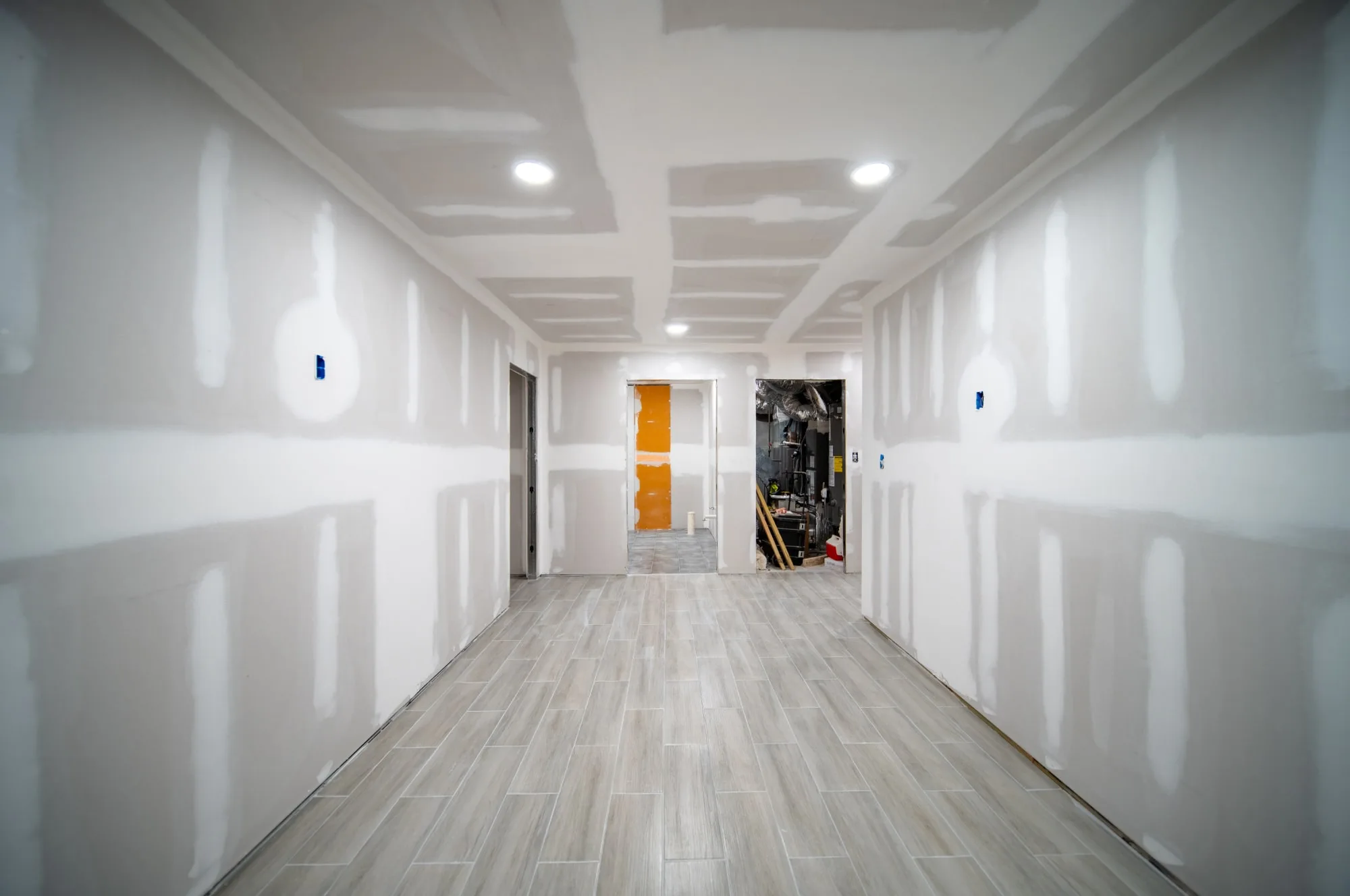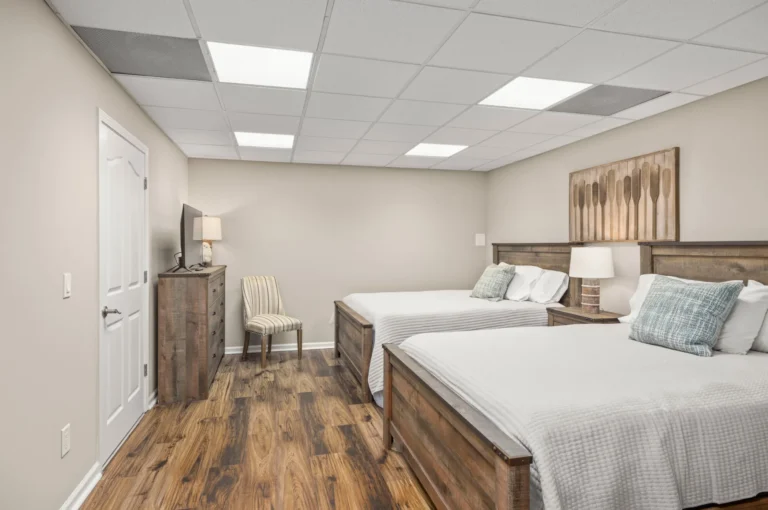Renovating a basement can turn what often feels like a dark, forgotten space into your home’s favorite hangout spot. But before jumping into design choices and color palettes, it’s crucial to think about the right materials. Basements face unique challenges, like moisture issues and temperature changes that regular rooms may not encounter. In my own renovation experiences, I’ve seen firsthand how proper material selection makes all the difference—great materials not only elevate the look of the space but also protect your investment long-term. So let’s dive deeper into what you need to know when choosing materials for a successful basement transformation!
When choosing materials for basement renovation, it is essential to consider moisture resistance, insulation needs, and durability, as basements are prone to humidity and temperature fluctuations. Additionally, selecting stylish yet practical options that enhance the space’s functionality—such as waterproof flooring and mold-resistant wall treatments—is crucial for a successful remodel.
Factors to Consider When Renovating a Basement
One of the primary aspects to think about is moisture control. Because basements are typically below ground level, they often face dampness that can harm your renovation materials and overall living experience. Addressing moisture should be at the forefront of your planning.
Utilizing products like vapor barriers on both floors and walls is a smart move, as they effectively prevent water from penetrating these surfaces. Additionally, integrating sump pumps is vital in areas prone to flooding; they act as your first line of defense against water ingress. To keep humidity levels manageable, using dehumidifiers can make a significant difference in maintaining a comfortable atmosphere.
I remember one project we handled at Integral Renovations where these measures were crucial—thanks to our robust moisture management system, we avoided issues even in high water table regions.
After handling moisture, another fundamental consideration is insulation needs for climate control and energy efficiency in your new space.
Proper insulation helps create a comfortable temperature year-round while also reducing energy costs. Using options like foam board or spray foam insulation provides superior performance compared to traditional methods.
For instance, employing a subfloor system such as DRIcore not only enhances thermal comfort but also further protects against potential cold floors in wet conditions. This method was instrumental in a recent renovation in Buford, GA, where it significantly stabilized indoor temperatures, making the basement much more inviting and livable.
Furthermore, while envisioning your basement transformation, take account of the structural elements present in the space.
Existing features like support beams and ductwork can pose challenges but don’t have to limit your creativity; instead, they can inspire design solutions. By integrating these elements subtly into your layout—such as installing drop ceilings—you can effectively conceal them without sacrificing accessibility.
Not only does this tactic hide unsightly features, but it also gives you opportunities to add stylish lighting fixtures to enhance the ambiance. The goal is to turn these structural realities from mere obstacles into beneficial components of a dazzling new space.
From determining moisture solutions to harnessing structural elements creatively, each choice enriches the opportunity for an exceptional basement design. Next, we’ll explore some standout options for elevating your walls and creating visual interest.
Top Wall Options
When it comes to renovating a basement, the walls are fundamental in defining the space and setting the overall aesthetic. One popular option is drywall, which offers versatility and a clean finish that complements various styles. However, it’s imperative to choose mold-resistant drywall specifically designed for damp environments.
For instance, in a recent project in Cumming, GA, we employed mold-resistant drywall to transform a damp, uninviting area into a lively entertainment zone. This proactive choice not only ensured a fresh look but also prevented potential mold issues that can arise in below-grade spaces.
In addition to drywall, another essential material for finishing basement walls is paint. Paint is a cost-effective solution that allows you to introduce color while providing an additional layer of protection against moisture. Opting for mold-preventative formulas ensures that your investment lasts longer and remains attractive. Furthermore, paint allows for easy updates—changing the ambiance with minimal effort and expense whenever you desire.
It’s critical to recognize that while mold-resistant drywall and specialized paint contribute significantly to the durability of your basement walls, they must also be used in concert with proper insulation and moisture control measures. Keeping energy costs down without compromising comfort involves understanding how these elements interplay within your renovation strategy.
As you explore the materials for your basement renovation, it’s important to consider flooring as well, since it plays a crucial role in both aesthetic appeal and practical functionality.
Ideal Flooring Choices
When it comes to choosing flooring for a basement, you’ll need to consider a range of factors. This includes moisture resistance, comfort, and aesthetic appeal. Basements often encounter higher humidity levels and temperature fluctuations, which can lead to challenges when selecting the right materials. Making informed decisions will provide a solid foundation for your renovation and create a space that is both functional and welcoming.
Vinyl Plank Flooring
One popular choice among homeowners is vinyl plank flooring. This material stands out because it mimics the look of natural wood while being remarkably water-resistant. Homeowners love its durability, making it an ideal selection for high-traffic areas often found in finished basements.
Carpet Tiles
Another option worth considering is carpet tiles. These provide a comforting feel underfoot and are relatively simple to install and replace if they ever suffer from water damage. The insulation properties they offer contribute to maintaining warmth in cooler basements, which is certainly appreciated during winter months. However, it’s important to note that carpet tiles can retain moisture if improperly handled, making them less than ideal in areas prone to flooding. My friend had a lovely setup using carpet tiles, and despite the inviting comfort it provided, she was swiftly reminded of moisture concerns after an unexpected leak.
- Comfort at your feet
- Additional insulation properties
- Easy replacement process
Ceramic/Porcelain Tiles
For those seeking versatility regarding design options, ceramic or porcelain tiles deliver an excellent balance. These materials are notably water-resistant; however, they can feel cold underfoot, particularly in unfinished parts of your basement.
With such diverse flooring choices available, you must weigh their pros and cons carefully before finding what best suits your unique basement environment. Moving forward, let’s explore ways to enhance the overall ambiance through ceiling improvements and lighting solutions.
Enhancing Ceilings and Lighting
Basements often face challenges like low ceilings that can make the space feel cramped and dark. Clever choices in ceiling design and lighting can significantly transform your basement into a functional and inviting area. You want to choose materials that make the most of limited vertical space while optimizing light distribution to create an airy feeling, no matter how deep below ground you are.
Recessed Lighting
One excellent option for lighting is recessed lighting. This type of fixture is installed into the ceiling, which allows for broader illumination without encroaching on headroom. Imagine walking into a brightly lit room with smooth silhouettes where light floods every corner—this can be achieved while maximizing your ceiling height!
Of course, careful consideration of the ceiling itself plays an equally important role in enhancing the overall appearance and functionality of your basement.
Drop Ceilings
Drop ceilings are another effective solution for lowering structures while concealing necessary ductwork or plumbing runs. They provide a clean look by keeping everything hidden yet remain accessible for maintenance if needed. By selecting attractive tiles that suit your home’s design, drop ceilings can bring both practicality and style to your interior.
Together, these innovative solutions not only enhance lighting and appearance but also create more operationally efficient spaces.
Remember that using lighter colors on walls will amplify the effects of your new lighting fixtures, further adding to the sense of openness in your basement sanctuary. If you’re committed to transforming your bottom level into a cozy area for family game nights or a quiet retreat for relaxation, planning out your ceiling and lighting is absolutely essential.
As we consider how vital these elements are to achieving an inviting atmosphere, attention to cost-effective options will also play a crucial role in bringing your vision to life.
Budget-Friendly Selections
When diving into a basement renovation, choosing budget-friendly materials not only helps manage costs but also opens up possibilities for creative solutions. One of the first recommendations is to consider using paint instead of wallpaper.
Why? Paint is not only cost-effective, with prices ranging from $15 to $30 per gallon, but it also offers flexibility in color and finish. You can easily touch up or change colors as trends evolve—something that wallpaper simply doesn’t allow without tearing down your walls.
Moreover, here are some benefits of opting for paint:
- Ease of Application: Painting is often a DIY task, meaning you can avoid labor costs.
- Quick Drying: Most paints dry quickly, allowing you to complete projects faster.
- Mold Resistance: Selecting mold-resistant paint is essential for basements, given their moisture susceptibility, adding extra protection to your investment.
Transitioning to flooring options, laminate flooring emerges as a fantastic substitute for hardwood. Priced between $1.50 to $3 per square foot, laminate provides that chic aesthetic while being incredibly durable and low-maintenance.
In a recent project in Atlanta, homeowners were thrilled to discover how laminate could mimic the look of expensive hardwood without draining their budgets. They achieved a luxurious ambiance while keeping costs manageable—a win-win situation!
Cost-Effective Materials
In addition to paint and laminate, think about other materials that won’t break the bank. A well-thought-out combination might include materials like ceramic tiles or vinyl plank flooring, which offer durability and resistance against moisture often found in basements.
The ceramic tiles can be pricier initially but provide longevity that ends up paying off when compared to cheaper options that may need replacement sooner due to wear and tear.
Furthermore, consider installing ceiling tiles worth around $1 to $5 per square foot. These versatile tiles provide an easy way to conceal ductwork while ensuring aesthetics remain a priority. You can choose from various styles that enhance your space without causing sticker shock.
Remember, the key is to focus on versatility and practicality during material selection. Seeking materials that boast both style and functionality will reflect positively on your overall basement design, keeping your project within budget while maximizing comfort and visual appeal.
With careful consideration and creativity applied in selecting these materials, you’ll be well on your way toward creating an inviting living space that’s tailored to your needs.
Final Touches for Your Basement
The finishing elements of a basement renovation can truly elevate the space, transforming it from a mere afterthought into an inviting, functional environment. One of the first things to consider is furniture selection. Since basements often have unique challenges—like variable humidity and temperature—it’s crucial to choose furniture that is both durable and easy to clean. Selecting modular pieces allows you the flexibility to reconfigure the space as needs change, making them great for multi-use areas such as game rooms or home theaters.
Additionally, proper furnishing isn’t just about aesthetics; it’s about practicality too.
Built-In Storage
When clutter begins to creep in, built-in storage solutions can make a world of difference. Using custom cabinetry and shelving maximizes space while keeping everything organized and easily accessible. Effective storage alleviates the feeling of confinement that sometimes accompanies basement spaces.
But beyond furniture and storage, the right finishing touches extend to lighting and decor as well.
Good lighting is essential for ensuring your basement feels inviting rather than cave-like. Consider layering different types of lighting: recessed fixtures provide even illumination without compromising headroom, while accent lights highlight architectural features or artwork. Lighter wall colors reflect light better, creating an illusion of openness and enhancing warmth.
To further enhance comfort and style, don’t forget about textiles and accessories.
Lastly, adding textile elements like rugs or throw pillows can soften hard surfaces and introduce color into your basement. These small accents create a welcoming atmosphere while allowing you to express your personal style. Ultimately, these final touches combine functionality with aesthetic appeal, leaving you with a basement that feels cohesive and livable—all thanks to thoughtful details that reflect your taste.
By carefully selecting appropriate materials and engaging design features, you can transform a basement not just into any room but into a treasured space in your home. To get started on your ideal basement renovation, reach out to us at Integral Renovations or call us at (470) 993-4343 today!



